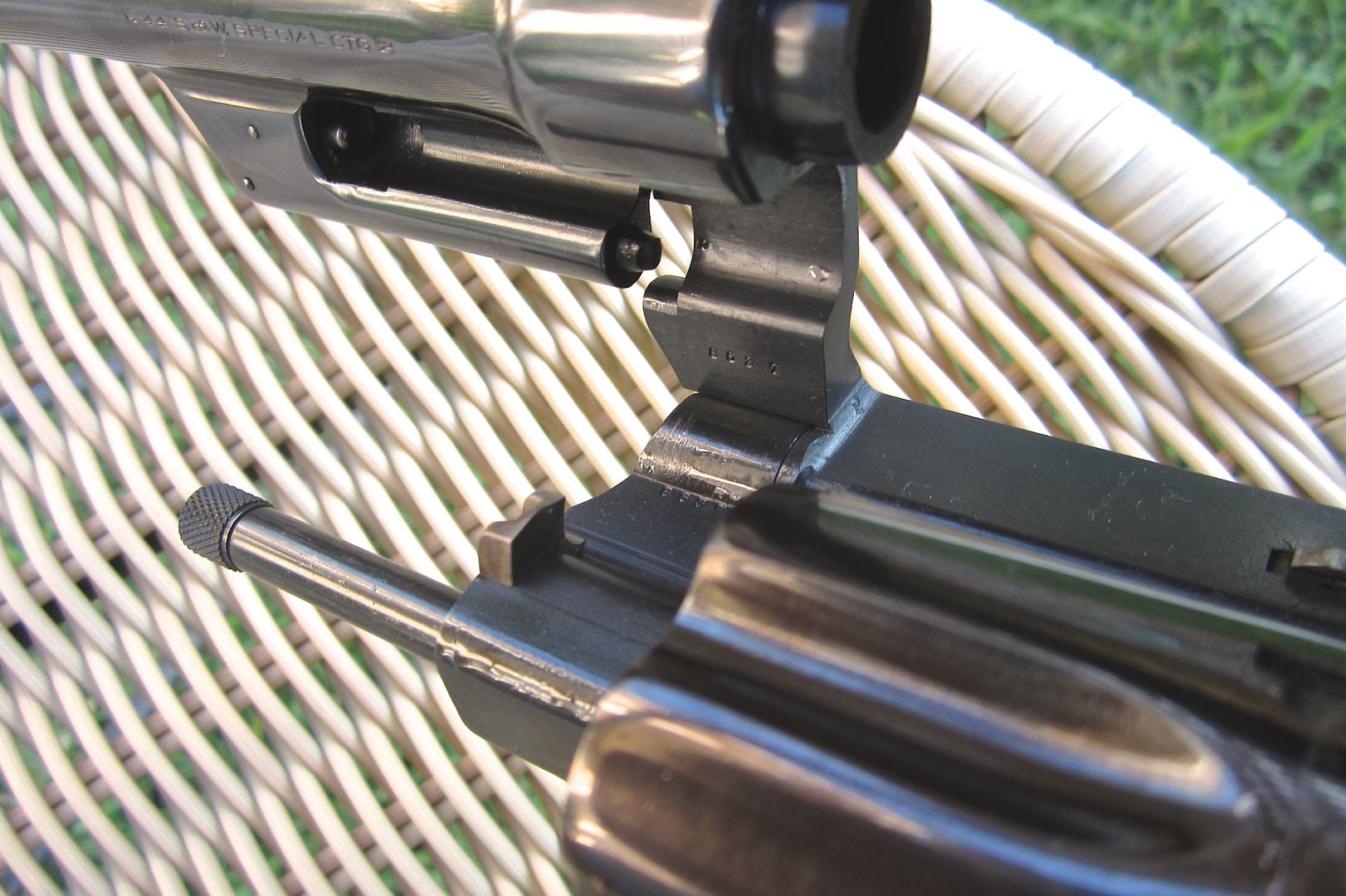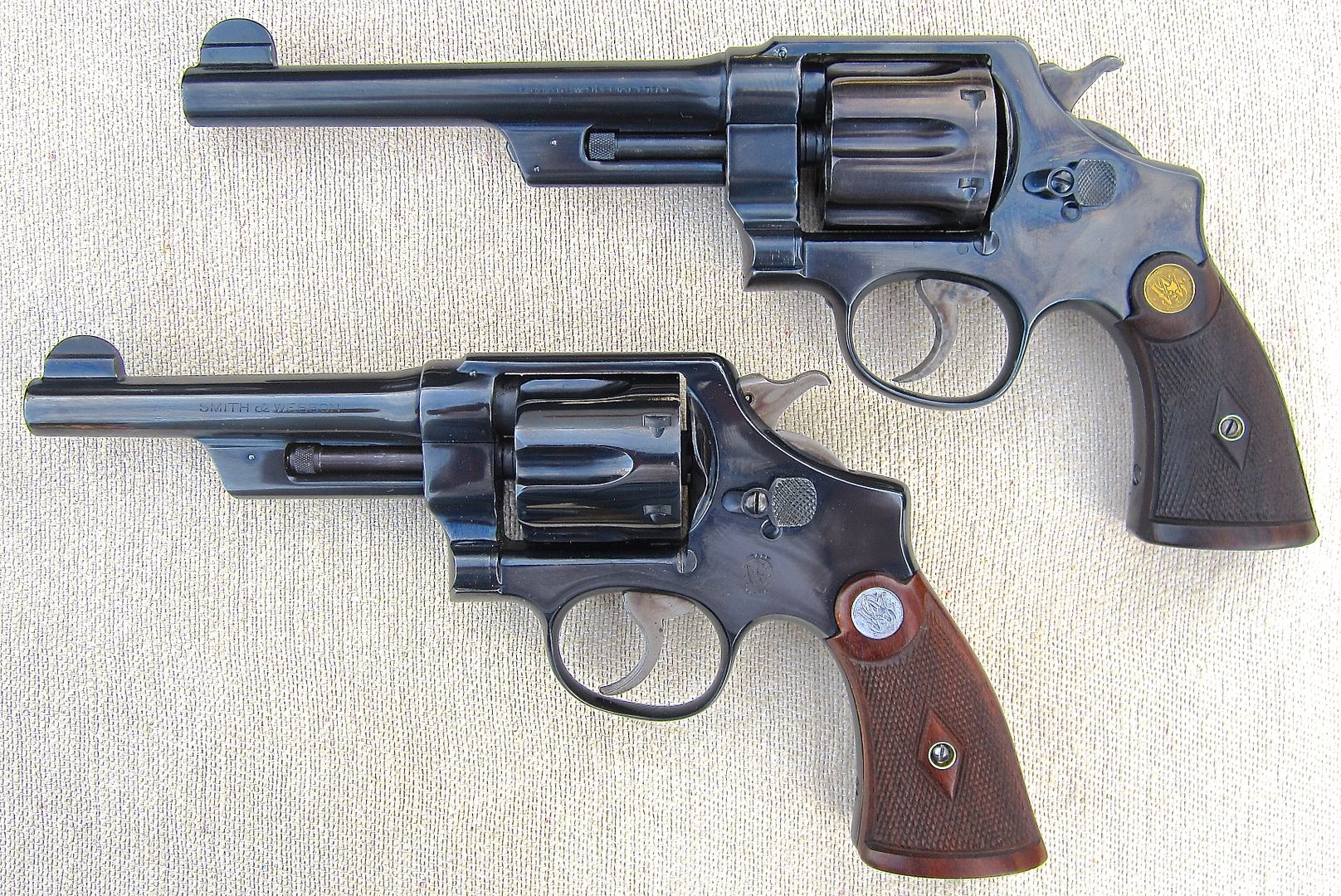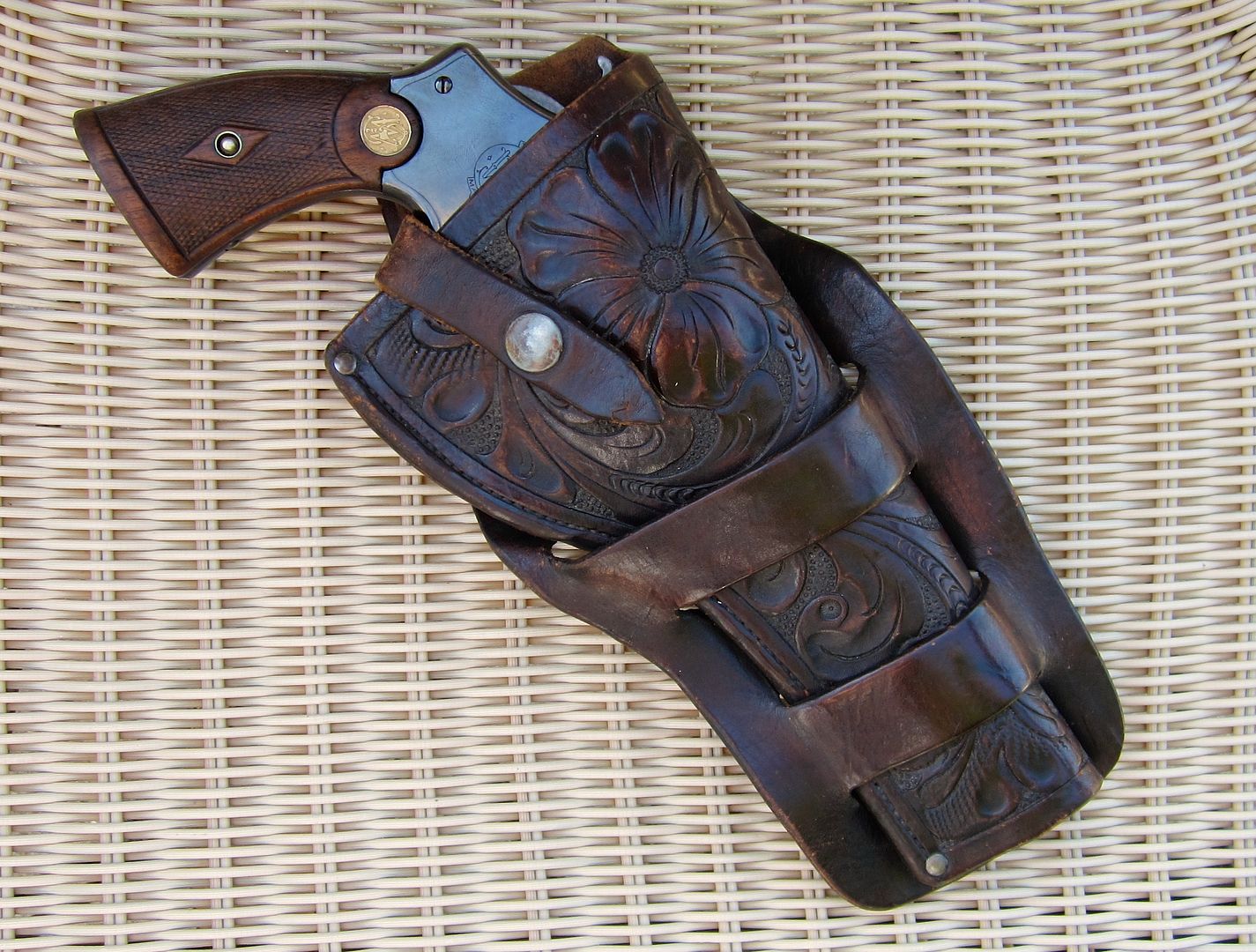I took a look at the Elmer Keith load I had developed, used, and tested in the Model of 1926 revolver all those years ago, considered the recoil experienced in shooting the load, considered the work required to again work up to such a load, and then looked at my now 86 year-old revolver, and demurred from again revisiting the Keith load for testing for this thread, even though some 250 grain cast lead bullets made to genuine Keith specifications are on hand. I'm older and maybe, just maybe
a little wiser. Keith may have respected the Triple Lock for its strength and ability to handle heavy charges, but there ain't no way I'm going to crowd things in my 107 year-old Triple Lock.
MV = muzzle velocity
ME = muzzle energy
ES = extreme spread 10-shot average
Factory Loads
Winchester 246 grain round nose lead http://www.winchester.com/Products/handgun-ammunition/Performance/Super-X-handgun/Pages/X44SP.aspx
Winchester 246 grain round nose lead: MV 681 fps, ME 253 ft./ lbs., ES 18 fps (tested 10/21/85 - 4-inch bb.)
Winchester 246 grain round nose lead: MV 714 fps, ME 278 ft./ lbs., ES 29 fps (5-inch barrel)
Winchester 246 grain round nose lead: MV 749 fps, ME 307 ft./ lbs., ES 60 fps (6 1/2-inch barrel)
Federal 200 grain lead semi-wadcutter hollow point Federal Premium Ammunition - Handgun
Federal 200 grain lead semi-wadcutter hollow point: MV 851 fps, ME 322 ft./lbs., ES 43 fps (5-inch bbl.)
Federal 200 grain lead semi-wadcutter hollow point: MV 901 fps, ME 361 ft./lbs., ES 69 fps (6 1/2-inch bbl.)
Handloads
Sierra 180 grain Jacketed Hollow Cavity https://www.sierrabullets.com/store/product.cfm/sn/8600/4295-dia-44-cal-180-gr-JHC
10.0 grains Unique
*, WW Lg. pistol primers, Remington cases: MV 1152 fps, ME 573, ES 59 fps (tested 10/21/85 4-inch bbl)
22.3 grains H110
*, WW Lg. Pistol primers, Federal cases: MV 1039 fps, ME 432 ft./ lbs. ES 48 fps (tested 2/5/89 5-inch bbl)
20.4 grains IMR 4227
*, WW Lg. Pistol Primers, Federal cases: MV 946 fps, ME 358 ft./lbs. ES 103 fps (tested 2/5/89 5-inch bbl)
208 grain Lee Wadcutter
4.0 grains Bulls-Eye, CCI 300 primers, MV 672 fps, ME 209 ft./lbs., ES 24 fps (5-inch barrel)
4.0 grains Bulls-Eye, CCI 300 primers, MV 697 fps, ME 224 ft./lbs., ES 45 fps (6 1/2-inch barrel)
240 grain Sierra Jacketed Hollow Cavity https://www.sierrabullets.com/store/product.cfm/sn/8610/4295-dia-44-cal-240-gr-JHC
18.5 grains H 110
*, WW Lg. Pistol primers, Remington cases: MV 967 fps, ME 468 ft./lbs., ES 67 fps ( tested 2/5/89 5-inch bbl)
17.3 grains IMR 4227
*, WW Lg. Pistol primers, Federal cases: MV 859 fps, ME 393 ft./lbs., ES 71 fps (tested 2/5/89 5-inch bbl)
8.0 grains Unique
*, WW Lg. Pistol primers, Remington cases: MV 951 fps, ME 452 ft.lbs., ES 22 fps (tested 2/5/89 5-inch bbl)
245 grain cast lead semi-wadcutter (Lyman No. 429421)
5.5 grains Red Dot, CCI 300 primer, Remington cases: MV 743 fps, ME 300 ft./lbs., ES 62 fps (5-inch bb.)
5.5 grains Red Dot, CCI 300 primer, Remington cases: MV 794 fps, ME 343 ft./lbs., ES 80 fps (6 1/2-inch bb.)
(brother-in-law took a whitetail deer with this load season before last using a 5-inch Smith & Wesson revolver)
7.0 grains Unique, WW Lg. Pistol primer, Remington cases: MV 790 fps, ME 339 ft./lbs., ES 48 fps (5-inch bbl.)
7.0 grains Unique, WW Lg. Pistol primer, Remington cases: MV 829 fps, ME 338 ft./lbs., ES 76 fps (6 1/2-inch bbl.)
7.5 grains Unique, WW Lg. Pistol primer, Remington cases: MV 817 fps, ME 368 ft./lbs., ES 27 fps (5-inch bbl. A favorite since 6/9/83.)
7.5 grains Unique, WW Lg. Pistol primer, Remington cases: MV 877 fps, ME 374 ft./lbs., ES 53 fps (6 1/2-inch bbl.)
8.0 grains Unique
*, WW Lg. Pistol primer, Remington cases: MV 878 fps, ME 419 ft./lbs., ES 36 fps (5-inch bbl.)
8.0 grains Unique
*, WW Lg. Pistol primer, Remington cases: MV 944 fps, ME 489 ft./lbs., ES 58 fps (6 1/2-inch bbl.)
7.0 grains Herco, CCI 300 primers, Winchester cases: MV 716 fps, ME 279 ft./lbs., ES 57 fps (5-inch bbl.)
7.0 grains Herco, CCI 300 primers, Winchester cases: MV 755 fps, ME 310 ft./lbs., ES 82 fps (6 1/2 inch bbl.)
8.0 grains Herco, CCI 300 primers, Winchester cases: MV 813 fps, ME 360 ft./lbs., ES 41 fps (5-inch bbl.)
8.0 grains Herco, CCI 300 primers, Winchester cases: MV 869 fps, ME 411 ft./lbs., ES 50 fps (6 1/2-inch bbl.)
Keith's Heavy Load (250 grain cast lead semi-wadcutter)
2400
* MV 1142 fps, ME 724 ft./lbs. ES 66 fps (tested 6/9/83 5-inch bbl.)
If you want to know more about the Keith load then research it online for I'm not tellin'. This load was carefully worked up in a 5-inch Smith & Wesson N-Frame revolver. Due to the revolver's configuration, with the thin service stock panels common to an earlier era and the lighter weight tapered barrel of that era, working up and testing the load was unpleasant. The load gave a surprisingly abrupt and stinging recoil. While it would be amply effective for personal defense in the right revolver, its best use would be as a short range big game hunting load for the dedicated .44 Special revolver owner. It would best be used in modern Smith & Wesson N-Frame .44 Special revolvers with
more hand-filling stocks, modern Colt Single Action Army revolver in .44 Special, Ruger .44 Special single action revolvers built on the basic Black Hawk frame, or else any .44 Magnum revolver.
Personally, I don't even want to be around if someone intends to fire this load in really antique .44 Specials, the Charter Arms Bulldog, various Smith & Wesson L-Frame 5-shot .44 Special models, or various Taurus 5-shot .44 Special models.
*Not suitable for Charter Arms revolvers or antique revolvers (I wouldn't use 'em in one).
Is There a .44 Special Revolver In Your Future?
It's hard to say. Currently, compactness, light weight, and high-capacity are the order of the day with most shooters. For the person who primarily owns and uses handguns for self-defense needs as most perceive them the .44 Special revolver will not appeal. The modern non-handloading shooter will not be satisfied with the .44 Special as it is one of the more expensive cartridges one can support through the sole use of factory ammunition.
On the other hand: if one is a student of shooting and enjoys meticulous handloading, if a sense of shooting history warms one's heart, if the addition of a bit of exclusivity to one's firearms collection appeals, if one seeks a very well-rounded handgun cartridge that is just a little bit different than what the crowd admires, then the .44 Special stands ready to imminently satisfy.
![Image]()















